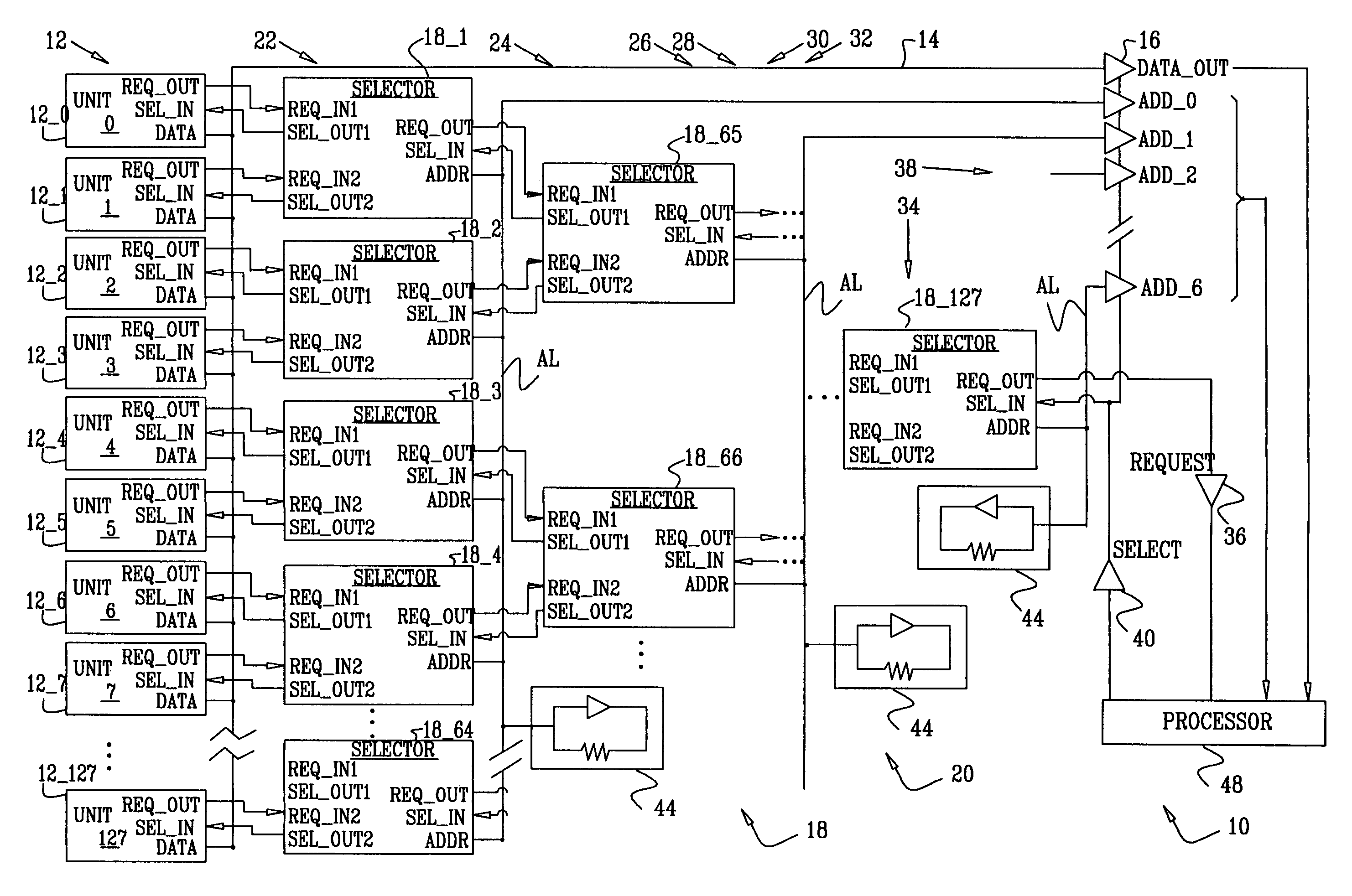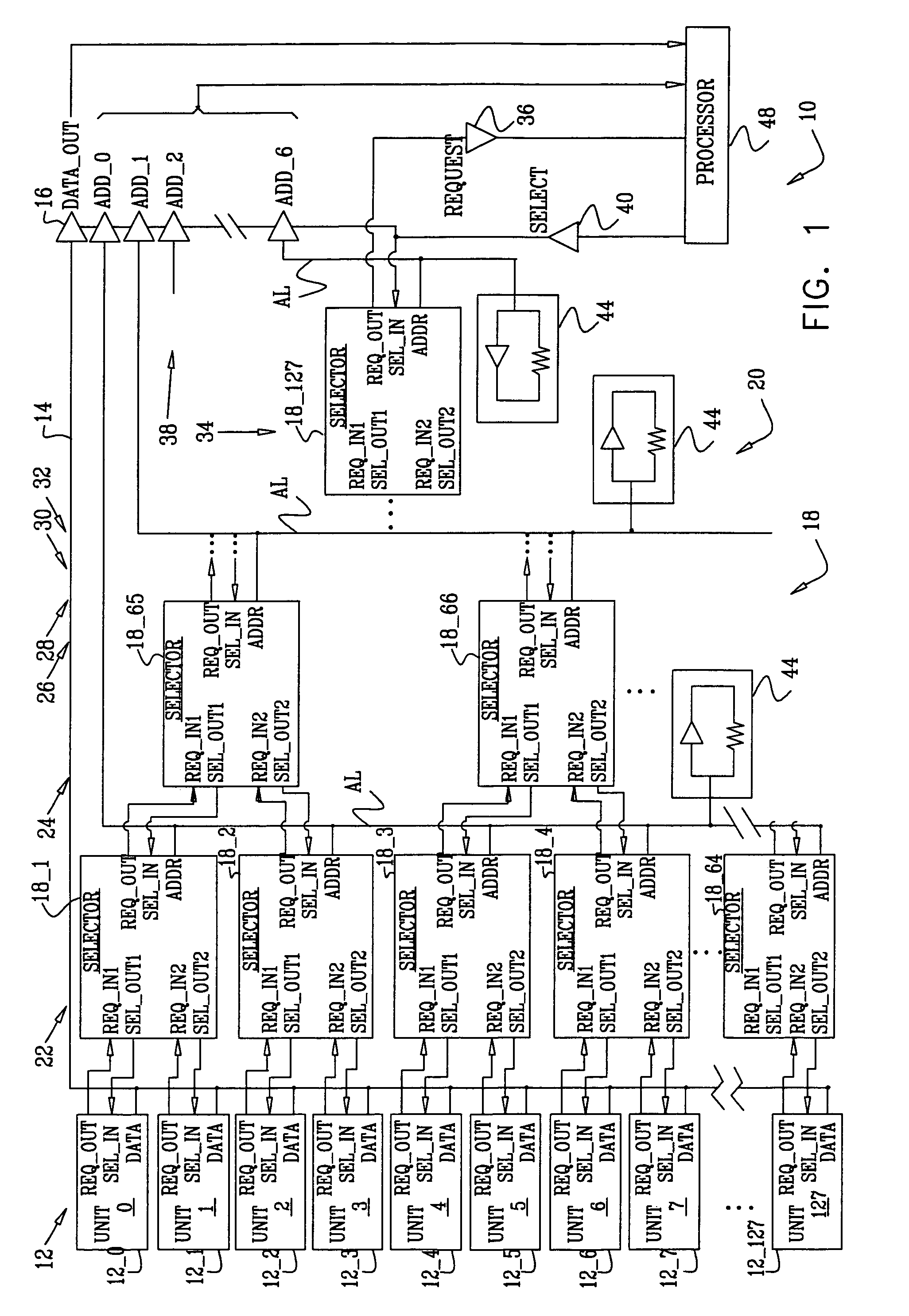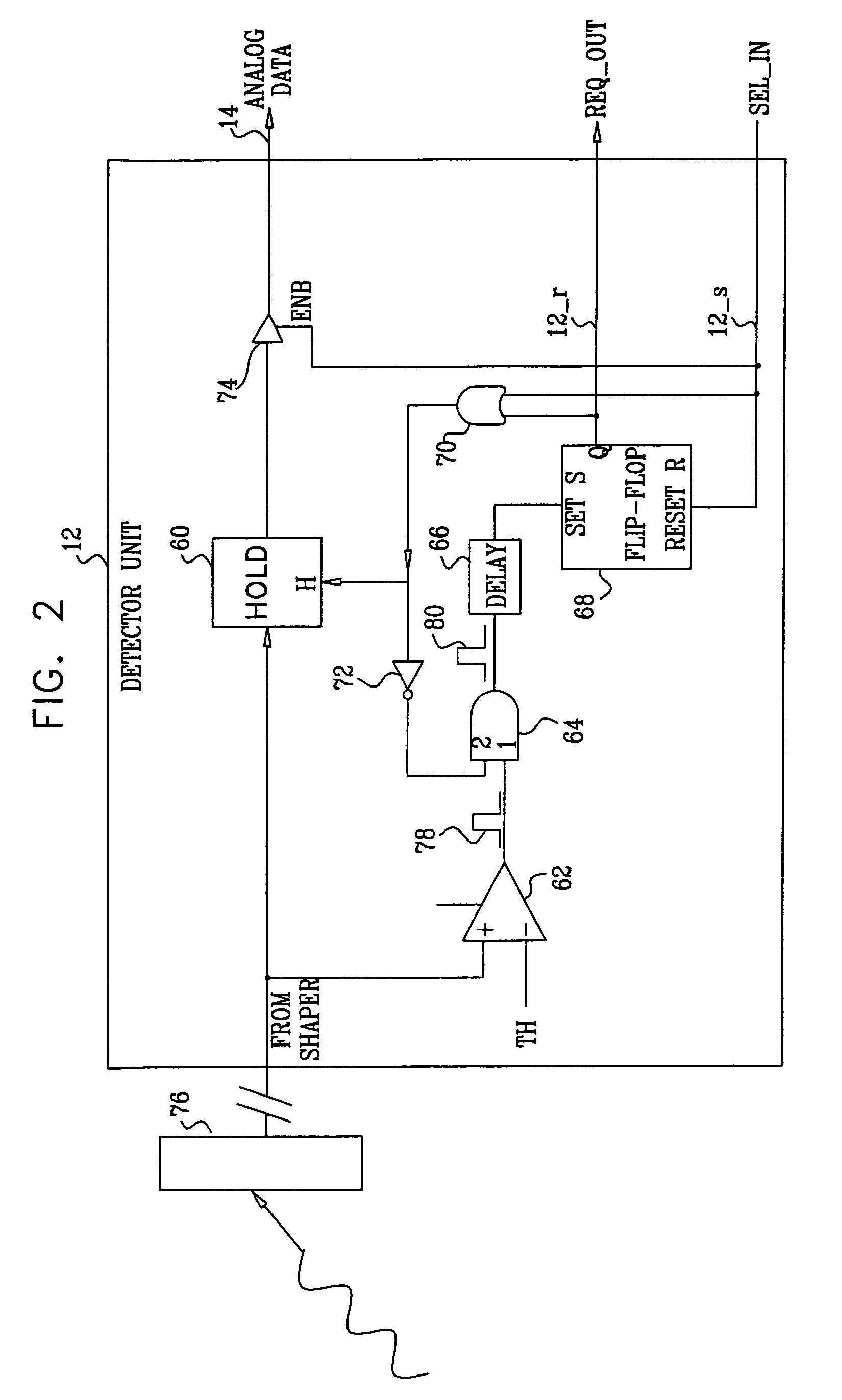Digital readout system
a digital readout and signal technology, applied in the field of signal detection, can solve the problems of a second type of simultaneous multiple, a critical affecting the final image produced, and the unresponsive of the detector, so as to increase the utility of the system, fast readout time, and effectively queue the effect of requesting signals
- Summary
- Abstract
- Description
- Claims
- Application Information
AI Technical Summary
Benefits of technology
Problems solved by technology
Method used
Image
Examples
Embodiment Construction
[0043]Reference is now made to FIG. 1, which is a schematic block diagram of a digital readout system 10 for detecting radiation, according to an embodiment of the present invention. System 10 comprises a multiplicity of detector units 12, herein also referred to as units and assumed by way of example to comprise 128 units. However, it will be appreciated that the number of units in system 10 may be any convenient whole number equal to or greater than two. In the specification the units are referred to generically as units 12, and specifically as unit n or unit 12—n, where n is an integer from 0 to 127.
[0044]As explained in more detail below, each unit 12 detects single photons, outputting a detected signal on a data channel 14, typically a bus line. The detected signal is transferred to a processor 48 via a readout amplifier 16. Processor 48 may comprise a field programmable gate array (FPGA), and / or any other convenient processor such as an industry-standard computing unit. Units ...
PUM
 Login to View More
Login to View More Abstract
Description
Claims
Application Information
 Login to View More
Login to View More - R&D
- Intellectual Property
- Life Sciences
- Materials
- Tech Scout
- Unparalleled Data Quality
- Higher Quality Content
- 60% Fewer Hallucinations
Browse by: Latest US Patents, China's latest patents, Technical Efficacy Thesaurus, Application Domain, Technology Topic, Popular Technical Reports.
© 2025 PatSnap. All rights reserved.Legal|Privacy policy|Modern Slavery Act Transparency Statement|Sitemap|About US| Contact US: help@patsnap.com



